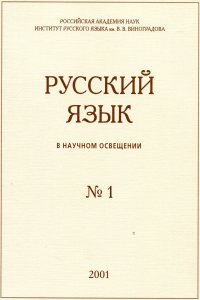On the word order in ‘verb – direct object’ combinations in Old Russian
Abstract:
The paper examines the position of non-clitic direct objects in verb phrases in Old Russian translations from Greek and in the Novgorod First Chronicle. The predominant word order in collocations including support verbs with the meaning ‘do, make, have, give, take’ in Old Russian Church Slavonic texts is OV: zlo tvoriti, derznovenije dati, věru jati, obyčaj iměti, etc. But in Old Russian chronicles a direct object occurs after a support verb when the given collocation has no Church Slavonic equivalent. In free combinations postposition of a direct object to the verb is preferred in all texts, especially in certain types of subordinate clauses. The main factor favoring preverbal objects is comparison or contrast. Pre-verbial objects are frequent in negative statements. The anaphoric pronouns sь, tъ, as well as words with the meaning ‘big, many’ and the word bogъ, tend to be used in preposition. In the Novgorod First Chronicle the VO order of the first clause of a complex sentence contrasts with OV order of subsequent clauses, and this contrast may be regarded as a device for establishing cohesion.


